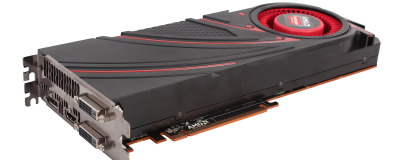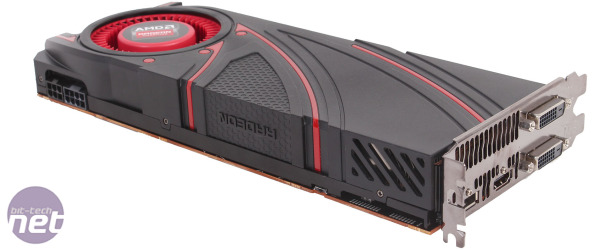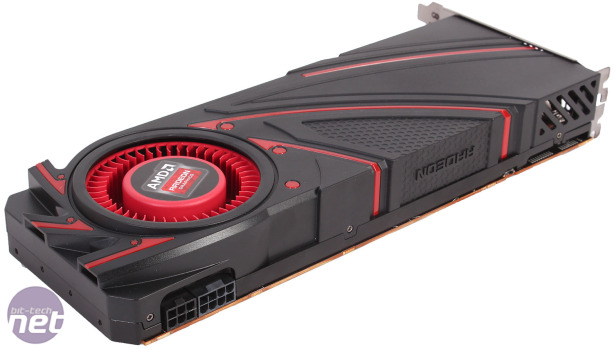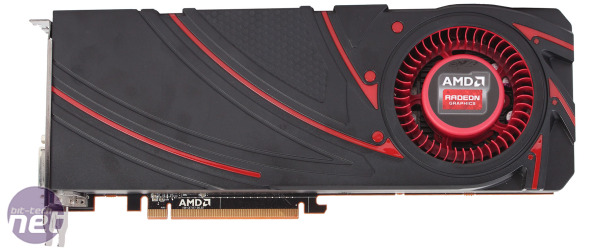Performance Analysis
In most of our Battlefield 3 tests, the GTX 780 has a lead of between 6 and 10 percent on the Radeon R9 290. However, AMD's card has a more significant lead than this over the next card down in Nvidia's product stack, and even manages a minimum frame rate of 52fps in the 2,560 x 1,600 test, which is 21 percent beyond what the GTX 770 manages. At 4K, the card also usurps the GTX 780, which goes to show how advantageous its huge pixel fillrate, 4GB frame buffer and large memory bandwidth can be.We used the absolute latest drivers from both teams for all four cards in Battlefield 4, and the R9 290 has a clear and significant lead over the GTX 780. This lead starts at 15 percent in terms of minimum frame rate at 1080p, and goes up with every increase in pixel count to almost 50 percent at 4K. Average frame rates are closer but still award victory to AMD, and the card also keeps pace with the faster R9 290X well. It's hard to draw too many firm conclusions here without having fully explored the game's performance at various points on more cards, but even so it's a great showing from the red team. Driver updates could easily change the situation at this early stage, but the 4GB RAM and memory bandwidth of AMD's cards seems to serve them very well, which is plausible since the engine is likely heavily optimised to take advantage of the 8GB of video RAM in each of the next gen consoles.
In BioShock, the R9 290 gets off to a great start, beating the GTX 770 by 22 percent and matching the GTX 780's minimum frame rate at 1080p. As you up the resolution, it actually increases this lead on the GTX 770, but equally the GTX 780 begins to pull further ahead. That is until you reach 4K, where the R9 290 is able to reclaim the upper hand, just managing to keep things playable where the GTX 780 cannot.
Crysis 3 begins with the GTX 780 as the stronger card, with a 5fps lead over the R9 290 which in turn has just a 4fps lead over the GTX 770. However, with each resolution increase, the R9 290 gets closer to the GTX 780's performance and further ahead of the GTX 770, eventually surpassing the former card in our multi-monitor configuration and extending this lead in the 4K test. It should be noted, however, that in both of these ultra high resolution tests, neither the GTX 780 nor the R9 290 can quite manage to maintain playable frame rates.
In Skyrim we again see performance from the R9 290 that's closer to the GTX 780 than the GTX 770, although this time at 4K it doesn't beat Nvidia's £400 card, but rather matches it. Unigine's favour of Nvidia hardware means the GTX 780 is further ahead of it than our other tests would suggest here, and the R9 290 only has a 3 percent advantage over the GTX 770, despite bigger margins elsewhere.
Power consumption is, as with the R9 290X, massive – not surprising given that they both use the same GPU. Despite the lower processing power of the R9 290, it still manages to consume as much power as the dual GPU GTX 690, and draws 74W and 85W more in our load test than the GTX 780 and GTX 770 respectively. As we noted in our 290X review, while this may sound a lot it shouldn't actually equate to a huge impact on your bill, though clearly it's not exactly desirable.
There are no surprises with thermals either, as the card again deliberately targets 95°C. In fact, the recently released driver which caused a slight delay in the card's launch, was apparently designed to force the card to target its higher clock speeds even more aggressively. Sadly, Hawaii's heat output is so high that the card still has to run fairly loudly, even just to maintain 95°C (or a delta T of 72°C).
Fortunately, our overclocking results don't disappoint. The R9 290 easily surpasses the GTX 780 and R9 290X at stock speeds in both Crysis 3 and Battlefield 3. In the former game, it even manages to squeeze past Nvidia's GTX Titan, which costs almost £800, thanks to a higher average frame rate. Temperatures don't increase when the card is overclocked, since the card physically won't allow them to, so the improved performance instead comes at the cost of noise. The fan peaked at around 55 percent in our overclocked test, which is fairly loud, although it's at least no louder than the R9 290X can be in its Uber Mode.
Conclusion
As with the R9 290X's launch, it's hard to deny the R9 290's appeal in terms of pure bang for buck, as the card is priced directly between Nvidia's GTX 780 and GTX 770 but consistently produces frame rates closer to those of the more expensive card. The £80 price gap between the R9 290 and GTX 780 also leaves plenty of room for custom cards (due later this year) to slot into, some of which could prove attractive if they're able to tame the R9 290's heat output while giving the GTX 780 a run for its money, which factory overclocks could certainly achieve.The £320 price point leaves the R9 290 4GB with a sector of the market pretty much to itself, as Nvidia's upcoming GTX 780 Ti will obviously supersede the GTX 780. The costliest GTX 770 variants do exceed £300, but really the R9 290 4GB is now the best bet for anyone with £300 or so to spend on a new GPU. That said, if you're sticking with a 1080p screen for the foreseeable future, the GTX 770's new price makes it a fantastic deal. Forking out extra for the GTX 780 could also be worth it if you're especially concerned about heat and noise output, as the Hawaii GPU again falls down in these areas. If that's too much to ask though, then for the reasons mentioned above it's certainly worth waiting to see what AMD's board partners have in store for us in a few months.
-
Performance36 / 40
-
Features22 / 30
-
Value26 / 30


MSI MPG Velox 100R Chassis Review
October 14 2021 | 15:04












Want to comment? Please log in.